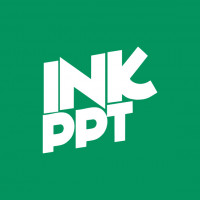Mastering the Art of Business Presentations: A Comprehensive Guide

Strong 8k brings an ultra-HD IPTV experience to your living room and your pocket.
A business presentation is a powerful tool in the corporate world, acting as a bridge between ideas and execution. Whether you're designing a corporate presentation, crafting a business pitch deck, developing sales templates, or strategizing a marketing plan, understanding the nuances of effective presentation design is essential. This guide dives deep into the various aspects of business presentations, offering insights to elevate your communication game.
What Is a Business Presentation?
A business presentation is a structured communication tool used to inform, persuade, or inspire stakeholders about a specific topic. It combines content, design, and delivery to present ideas in a clear, impactful manner. Common uses include pitching ideas, sharing progress updates, and presenting strategies.
Why Are Business Presentations Important?
Clarity of Communication: Simplifies complex information.
Engagement: Keeps the audience involved with visual and verbal storytelling.
Persuasion: Drives decision-making through compelling arguments.
Key Types of Business Presentations
1. Corporate Presentation Design
Corporate presentations are tailored to represent a company’s identity, values, and objectives. These are often used for internal communication or stakeholder meetings.
Key Elements:
Company Overview: Vision, mission, and milestones.
Data Visualizations: Charts, infographics, and statistics.
Consistent Branding: Fonts, colors, and imagery aligned with brand guidelines.
Design Tips:
Prioritize clean, professional designs.
Maintain consistency across slides.
Use high-quality visuals and animations sparingly.
2. Business Pitch Decks
Pitch decks are concise presentations used by entrepreneurs or businesses to pitch their ideas to investors.
Key Components:
Problem Statement: Highlight the pain point your solution addresses.
Solution: Showcase your unique product or service.
Market Opportunity: Present market research and potential.
Business Model: Explain revenue streams.
Team: Highlight expertise and experience.
Success Tips:
Keep it to 10–12 slides for clarity.
Focus on storytelling.
Anticipate and address potential investor concerns.
3. Sales Presentation Templates
Sales presentations are designed to persuade potential clients to purchase a product or service.
Essentials:
Client-Centric Approach: Address client needs and pain points.
Benefits Over Features: Highlight advantages rather than technical specs.
Testimonials and Case Studies: Build trust with success stories.
Design Strategies:
Use compelling visuals to support key points.
Include clear CTAs (Call to Actions).
Personalize the content for the audience.
4. Marketing Strategy Presentations
These presentations outline marketing goals and strategies for campaigns or initiatives.
Core Sections:
Market Analysis: Data-driven insights into market trends.
Target Audience: Define demographics and psychographics.
Tactics and Channels: Highlight platforms and methods.
KPIs (Key Performance Indicators): Metrics to track success.
Best Practices:
Make data visually appealing with graphs and charts.
Ensure alignment between goals and strategies.
Keep it actionable and concise.
5. Fundraising Deck Design
Fundraising decks are a subset of pitch decks but focus on financial aspects to attract investors.
Vital Slides:
Financial Projections: Showcase growth potential.
Use of Funds: Explain how the investment will be utilized.
Exit Strategy: Highlight ROI for investors.
Crafting Tips:
Be transparent and realistic.
Use charts to display financial data effectively.
Keep the narrative optimistic yet grounded in reality.
Design Principles for Impactful Business Presentations
1. Visual Hierarchy
Use font sizes, colors, and spacing to direct attention to key points.
2. Minimalism
Avoid clutter; focus on simplicity. Each slide should convey one primary idea.
3. Typography
Stick to professional fonts like Arial or Calibri. Use bold for emphasis and italics sparingly.
4. Consistency
Align visuals, colors, and styles throughout the presentation.
5. Animation and Transitions
Use subtle animations to maintain professionalism. Avoid overloading with effects.
6. Color Psychology
Choose colors that evoke emotions relevant to your message. For example, blue for trust and green for growth.
Looking to elevate your presentation game? Collaborate with experts to design bespoke decks that leave a lasting impression. Visit INK PPT today to transform your ideas into visual masterpieces!
Software and Tools for Presentation Design
PowerPoint: Versatile and widely used.
Keynote: Apple’s sleek presentation tool.
Canva: Offers customizable templates and graphics.
Google Slides: Great for collaboration.
Prezi: Unique zoomable interface for dynamic storytelling.
Crafting the Perfect Presentation Flow
1. Start Strong
Introduction Slide: Begin with a hook – a striking image, a thought-provoking question, or a key statistic.
2. Tell a Story
Create a narrative arc: Problem, Solution, Benefits, and Call to Action.
3. Use Data Strategically
Support arguments with credible data. Highlight insights using visuals.
4. Engage the Audience
Incorporate interactive elements like polls or Q&A sessions.
5. End with Impact
Recap key takeaways and include a compelling CTA.
Common Pitfalls to Avoid
Overloading Slides: Stick to the "6x6 rule" – no more than 6 bullet points with 6 words each.
Neglecting Rehearsal: Practice to ensure smooth delivery.
Ignoring Audience Needs: Tailor content to the specific audience.
Poor Contrast: Ensure text is readable against backgrounds.
How to Deliver a Winning Business Presentation
1. Confidence is Key
Familiarize yourself with the content.
Maintain eye contact and use open body language.
2. Engage with the Audience
Ask questions, seek feedback, and encourage participation.
3. Handle Q&A Gracefully
Prepare for potential questions and provide thoughtful answers.
4. Time Management
Stick to the allotted time to maintain audience attention.
5. Follow Up
Share slides and additional resources post-presentation.
Examples of Successful Business Presentations
Steve Jobs’ Product Launches: Known for simplicity and storytelling.
TED Talks: Combine visuals and compelling delivery.
Investor Pitches by Startups: Focused, clear, and persuasive.
Looking to elevate your presentation game? Collaborate with experts to design bespoke decks that leave a lasting impression. Visit INK PPT today to transform your ideas into visual masterpieces!
Conclusion
Mastering the art of business presentations requires a blend of creativity, strategic thinking, and effective communication. Whether you’re crafting a corporate presentation, pitching a business idea, or strategizing marketing efforts, a well-designed and delivered presentation can make all the difference.
For more insights on creating impactful business presentations, explore our comprehensive guide.
Note: IndiBlogHub features both user-submitted and editorial content. We do not verify third-party contributions. Read our Disclaimer and Privacy Policyfor details.




